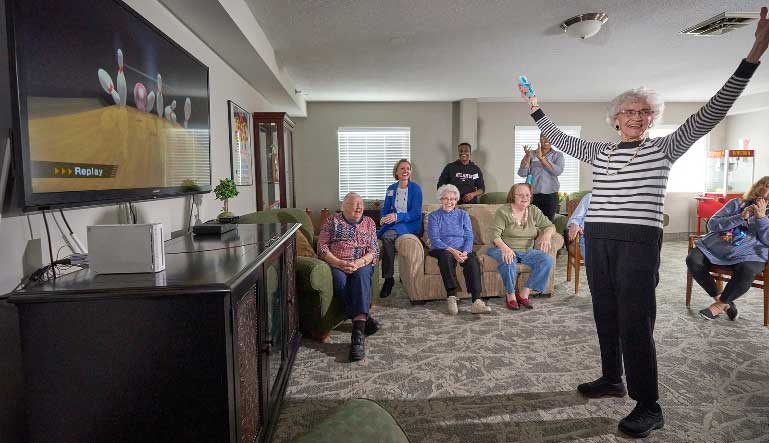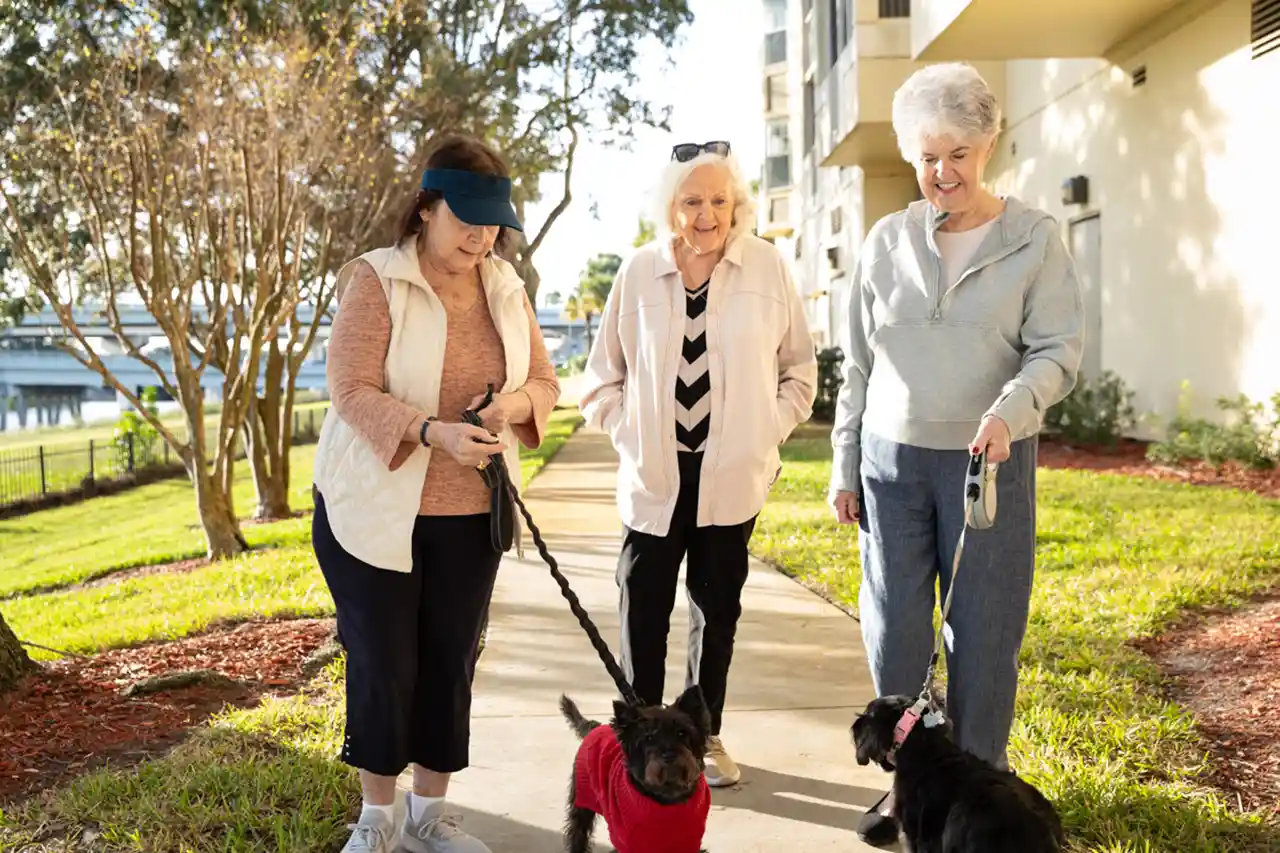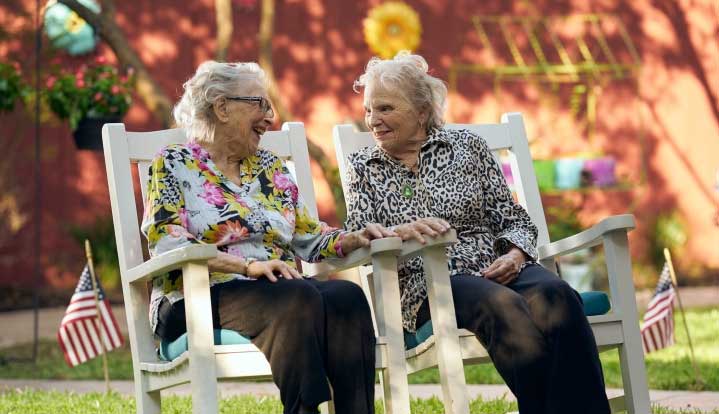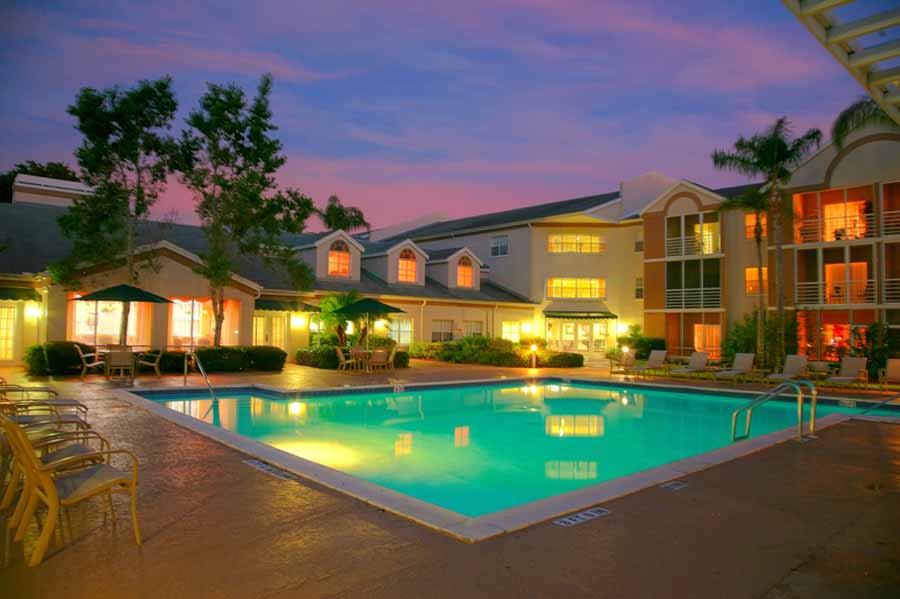Navigating retirement should be exciting, and exploring your living options is an important part of the journey. If you’re an active older adult looking to simplify life without sacrificing independence, senior independent living might be the perfect fit.
Independent living refers to purpose-built communities designed for older adults who want the freedom of maintenance-free living, along with amenities, activities, and a strong sense of community — all without the responsibilities of homeownership.
It’s a lifestyle choice that puts more time and energy back into your passions. Learn about the benefits, costs, types of accommodations, and how independent living differs from assisted living to see how independent living could be the perfect fit for your golden years.
Table of Contents
Benefits of Independent Living for Seniors
Moving to an independent living community offers a host of benefits for older adults, including:
No Home Maintenance or Repairs
Independent living frees residents of the burdens of home ownership and maintenance. Moving to an independent living community means no more shoveling snow, mowing the lawn, fixing home appliances, or worrying about other maintenance issues or unexpected costs.
Meals Included
As we age, preparing nutritious meals or maintaining a balanced diet on a daily basis can become more challenging or more burdensome, especially when medications affect appetite or dietary restrictions are involved. In independent living communities, delicious, restaurant-quality meals are included in the monthly cost, making mealtime both convenient and enjoyable. Menus typically offer a variety of options and accommodate special dietary needs.
For those who still enjoy cooking, many communities also provide accommodations with full kitchens or kitchenettes, giving residents the flexibility to prepare meals in the comfort of their own home.
Amenities & Conveniences
Depending on the independent living community, residents have access to a host of amenities and programs to make retirement life easier and more enjoyable. Community events and activities like fitness classes, happy hours, lectures, movie nights, and more fill the social calendar. Pet-friendly policies, garages reserved for residents’ vehicles, on-site beauty/barber shops, and swimming pools are just a few of the attractive conveniences that may also be available.
Some independent living communities even have a concierge to help make arrangements for theater tickets, dry cleaning, travel plans, and more. In addition to the amenities on campus, residents get to enjoy the many amenities nearby. From access to tranquil walks in nature to bustling shopping days in the city, there are independent living communities in neighborhoods to suit many different lifestyles.
Socialization
Maintaining connections with others is a crucial part of a balanced and happy life, especially as we age. Senior isolation is a serious issue for adults in retirement, and independent living communities offer meaningful ways to connect with friends and neighbors each day. Whether it’s a quick cup of coffee in the dining room before morning devotionals or an afternoon of games, the built-in opportunities for socialization are a major reason seniors choose independent living. At the same time, these communities also respect the needs of introverts, offering private spaces and the flexibility to engage socially as much—or as little—as each resident prefers.
Safety and Security
Your safety and peace of mind are important, especially as you age. Independent living communities offer a secure environment designed with you in mind. With staff onsite around the clock, emergency call systems, and fire safety features throughout, you can enjoy your independence knowing help is always available if needed. It also gives your loved ones confidence and peace of mind, knowing you’re in a safe, supportive setting.
Personal Assistance
Some independent living communities also have programs in place to offer assistance with personal care – this is a bit different from a full-on assisted living community (more about that below!). This allows an older adult to remain independent longer.
Discover more reasons to make the move to an independent living community.
How Much Does Independent Living Cost?
Independent living communities vary widely in terms of cost, which typically range from $2,000 to $5,000 or more a month. When considering everything that is included when moving to independent living, what may initially seem expensive ends up being an economical choice.
Services covered in the monthly fee at an independent living community include things that would cost much more when purchased separately, like lawn care, property maintenance, housekeeping, and meals.
Some factors that influence the cost of independent living include:
Type of independent living community: A stand-alone independent living community with few amenities may cost less than an independent living community with more robust offerings or one located on the campus of a continuing care community.
Location: As with other housing types, location plays a factor in cost. Major cities typically have a higher cost of living which translates to higher monthly rates. Pricing will be higher in more desirable neighborhoods. Housing type and square footage of accommodations at an independent living community will also influence the monthly fee.
Learn more about the average cost of independent living and why it may be more affordable than aging in place.
Independent Living Apartments & Residences
To support comfortable and safe aging, independent living communities offer housing designed with the needs of older adults in mind. These residences often offer single story living and incorporate features such as wider doorways, strategically placed grab bars, accessible showers, and emergency call systems.
Senior housing in independent living communities includes a variety of options with diverse layouts and square footage such as:
- Apartments
- Cottages or villas
- Duplexes
- Townhomes
- Condominiums
Is independent living the same as a retirement community?
Independent living communities are often also called retirement communities. The terms are interchangeable and refer to a community for seniors that has amenities and services that make life easier and more social while maintaining independence.
What’s the difference between independent living and senior apartments?
In some instances, an independent living community is structured as senior apartments, but the main difference is that senior apartments not affiliated with an independent living community are primarily focused on providing affordable senior housing for older adults, though there are luxury senior apartment communities as well.
What’s the difference between independent living and a 55+ community?
Although there’s no ‘official’ definition of independent living vs. 55+ communities, there are key differences in how they tend to be described or categorized. In general, independent living communities offer a higher level of amenities and service, making for a stress-free living experience, whereas 55+ communities’ amenities are more varied depending on the complex. Another major difference is that in 55+ communities, it’s common for residents to own their home, whereas in independent living communities, residents are most often renting.
What’s the Difference between Independent Living and Assisted Living?
Independent and assisted living are both senior living communities with key differences:
Independent living is for older adults who are able to execute Activities of Daily Living (ADLs) without help and are looking to move on from home ownership but can and want to live on their own. Independent living communities aim to provide a maintenance-free lifestyle, and often offer dining programs, housekeeping, and laundry, plus a busy social calendar of activities and events.
Assisted living is ideal for older adults who need help with daily activities but don’t need continuous medical supervision. These senior living communities offer a step up in services for seniors who need help with medication, bathing, dressing, and personal care. They provide restaurant-style dining and a selection of social activities, physical fitness programs, and other life enrichment activities.
Learn more about independent living vs assisted living.
Independent Living FAQs
Who is independent living best suited for?
Independent Living is a great senior living option for older adults who can manage mostly on their own but don’t want the hassle of keeping up a home, who are mobile, don’t suffer from major health or cognitive issues, and find the social aspect of independent living activities and appealing or are interested in the convenience of having an array of amenities within walking distance.
What is the average age of an independent living resident?
Independent living community residents range in age from the mid-50s to eighties and beyond.
What are considered independent living skills?
Independent living communities center around adults who are able to accomplish daily living tasks, also known as Activities of Daily Living (ADLs), without assistance.
What support is included in an independent living community?
Support across independent living communities generally includes some or all of the following:
- home maintenance and groundskeeping
- housecleaning
- healthy on-site dining options
- senior activities and events
- laundry service
- transportation assistance
- 24/7 security and on-call help
Different independent living communities have different services. Some independent living communities are part of a larger senior care organization, and in these instances, there may be more readily available medical support or the ability to transition into assisted living or make use of assisted living services on the same campus if the need arises.
For other standalone independent living communities, these may function more like a luxury apartment complex, where additional support is not available.
When to transition to independent living?
If you find that you are feeling like you’d like to take some of the stressors of home maintenance, cooking or cleaning, and other day-to-day priorities off your shoulders, considering a move to independent living could be the right thing for you. Downsizing and / or moving closer to family may also be a good time to make the transition to a senior living community.
How to Find the Right Independent Living Community
With so many living options available to seniors, and many with similar grounds and amenities, finding the independent living community that’s the right fit can feel daunting. More important than amenities, though, is finding a place to be able to settle into and really be a part of, to feel comfortable socially and accepted for who you are.
As you research different independent living communities, take your time browsing websites, reading testimonials, and be sure to schedule a tour for your top choices.
Here’s a list of questions to ask when touring a senior living community.
Find an independent living community near you
Ready to begin your search? See all that independent living at Five Star Senior Living has to offer. From our life enrichment programs to our Five Star culinary dining, stress-free living is closer than you think.
Find an independent living community near you to get started.
Contact Us Today






 This success wouldn’t be possible without our team members’ passion, dedication, and active participation. Their feedback is invaluable, guiding us toward building a workplace that truly reflects the best of what we can be.
This success wouldn’t be possible without our team members’ passion, dedication, and active participation. Their feedback is invaluable, guiding us toward building a workplace that truly reflects the best of what we can be.



